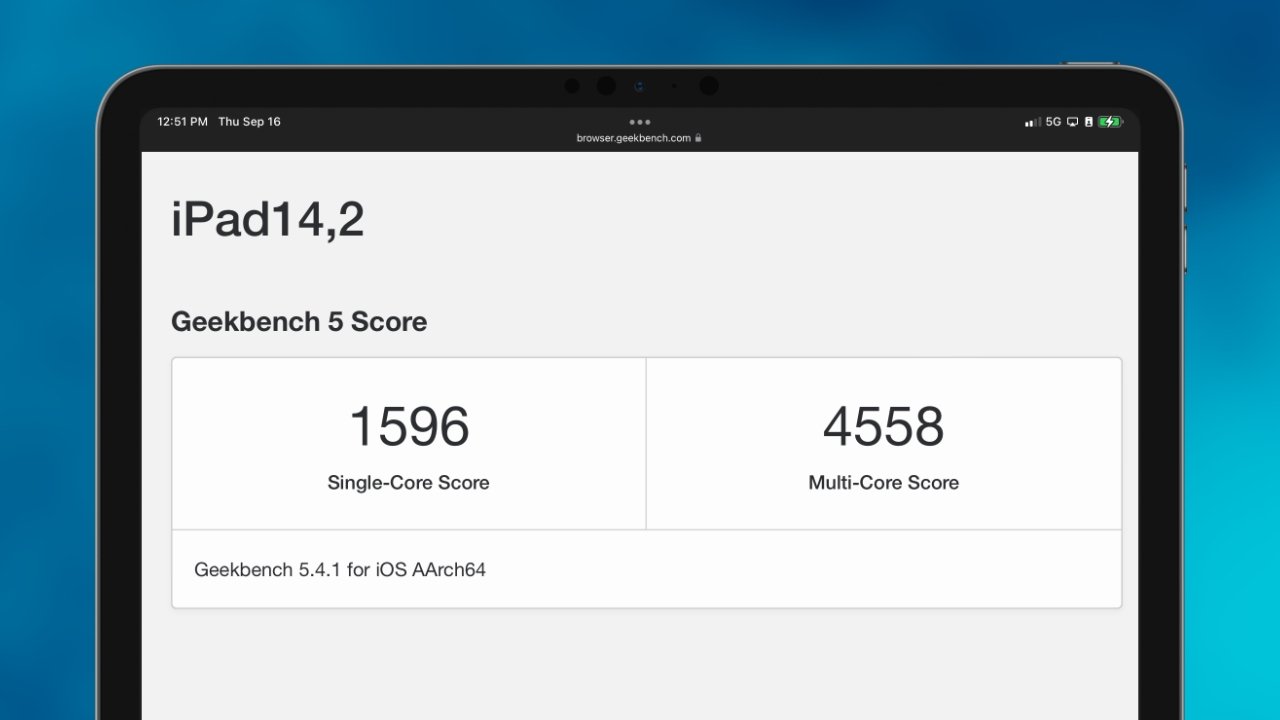
Apple was really good in hiding it yesterday but it seems like the A15 in the iPhone 13 is not going to have any gains in CPU performance compared to the A14. Which is quite a surprise given Apple's steady progress during the last few years https://t.co/HDIEEDshwO
— Andreas Proschofsky (@suka_hiroaki) September 15, 2021
A15 in the iPhone 13 Pro has a 55% increase on GPU vs A14 in iPhone 12 Pro.
— Dylan Patel (@dylan522p) September 15, 2021
CPU caches are unchanged, but clock went up to 3.23GHz from 3GHz. Doubt there's much of an IPC increase.
The 32MB LLC and potential inclusion of LPDDR5 doing big work in GPU.https://t.co/xqYnifuJDu
Process node isn't what dictates CPU architecture. It helps a bit on power and clocks, sure but it isn't the main reason. Apple's lead comes from architecture. They have the transistor budget to change the architecture and get more gains. They didn't use it on the CPU though.
— Dylan Patel (@dylan522p) September 14, 2021
This certainly makes sense.
— Joe Rossignol (@rsgnl) September 16, 2021
- The transition to mini-LED is still in progress across Macs and iPads. We don’t even have a Mac with mini-LED yet (hopefully next month…)
- Waiting for 120Hz panels for ProMotion consistency across iPhone Pro, iPad Pro, and MacBook Pro?
Apple A15 Geekbench score, only one word left to Android: despair. pic.twitter.com/luxuWmUZlZ
— Ice universe (@UniverseIce) September 16, 2021
They put those resources in other areas of the design. And the meta point is its much less about CPU these days and more about the heterogenous solution. To say it is because the team is weakened is just not true. We can debate other reasons but that's not it.
— Ben Bajarin (@BenBajarin) September 14, 2021
CPU engineers don't magically flip over to other teams and architectures.
— Dylan Patel (@dylan522p) September 14, 2021
The article talks about heterogenous, yes.
The team is certainly weakened due to Nuvia and not Rivos departures. Can't the >100 engineers who have left.
What a crappy announcement of the A15. Is Apple finally hitting strong the IPC wall? Brain drain after key top architects and designers left for NUVIA and others? #SiliconGang
— Danilo "18pF flip-flop" Cominotti (@dcominottim) September 14, 2021
You really can't read. Maybe don't subtweet when you don't understand the first thing about semiconductors. pic.twitter.com/YZsDERBrfA
— Dylan Patel (@dylan522p) September 15, 2021
You can browse misinformation on Facebook slightly faster on iPhone 13 vs. Snapdragon 888. ???? https://t.co/lGqQ914oQA
— Jez (@JezCorden) September 16, 2021
In the Apple Cinematic Universe, there is only one store in the world with lamps on the tables, arched windows, *and* indoor trees with integrated seating. Therefore, the illustrations in this release necessarily depict Apple Carnegie Library. https://t.co/IoTUPAGZGt pic.twitter.com/7Db3EkhFim
— Michael Steeber (@MichaelSteeber) September 16, 2021
This was less about struggling and more about being second gen 5nm, essentially no process gains. The pattern when jumping to a new process is generally 20% perf gains so wouldn't expect much if staying on same process as they are.
— Ben Bajarin (@BenBajarin) September 14, 2021
With Intel design teams starting to get back on track, AMD executing almost flawlessly, and Qualcomm coming in soon like a hammer with Nuvia cores, we aren’t sure if Apple’s lead will be sustained https://t.co/DCIZ0zCFIU
— hussein kanji (@hkanji) September 16, 2021
A15 is a 7.6% ST increase with 8% clock increase.
— Dylan Patel (@dylan522p) September 16, 2021
CPU architecture looks mostly the same, but with new MMU and nested virtualization.https://t.co/U6Bo0US3f8https://t.co/wTYxCZxAW1
"it makes me wonder if Apple is perhaps trying to soft-pedal a new chip that isn’t much faster than the older model" Apple doesn't say (or omit) things without much thoughthttps://t.co/PZs3CvspML
— Michael Gartenberg (@Gartenberg) September 15, 2021
There are some hilariously bad A15 hot takes making the silicon sub stack rounds. I’m working on a video, but it’ll take a while.
— Rene Ritchie (@reneritchie) September 15, 2021
In the meantime, I look forward to reading @BenBajarin @anandtech, and others who understand how transistor budgets can be spent across features…
Why no always-on on iPhone 13 Pro ... this may be why: In the presentation, Joz says the iPhone screen can go as low as 10Hz. However, the Apple Watch screen refreshes at 1Hz in always-on mode. pic.twitter.com/JhUyV7DafI
— Benjamin Mayo (@bzamayo) September 15, 2021
Specs are increasingly toxic. (For customers *and* vendors.) Don’t focus on numbers. Focus on experiences delivered.
— Rene Ritchie (@reneritchie) September 16, 2021
Semi trucks ? having more wheels than hyper cars ? isn’t a helpful spec absent context.
What capabilities does it deliver now, how long will it get updates? https://t.co/9RwnjVb8n2
“I really wish my phone had a faster processor” said no one.
— Jeff Nolan ??? (@jeffnolan) September 16, 2021
Focus on experiences, not numbers. The screen is easier to read in direct sun, the battery lasts longer, games are smoother. This is what matters to users. https://t.co/tuXK2keym7
If the continued increase in system cache size is true, I am keyed to think the hand-wringing about low net perf wins on A-series SoCs may be overwrought...Apple's always been able to win speed by moving data closer to the core.
— Alex Russell (@slightlylate) September 15, 2021
Tech community not impressed by Apple's new iPhone due to lacklustre CPU gains on A15.. (same node, +GPU +ML perf)
— NerdTech (@nerdtechgasm) September 15, 2021
Me: Battery lasts 2x longer on a single charge? Impressive.
.png)